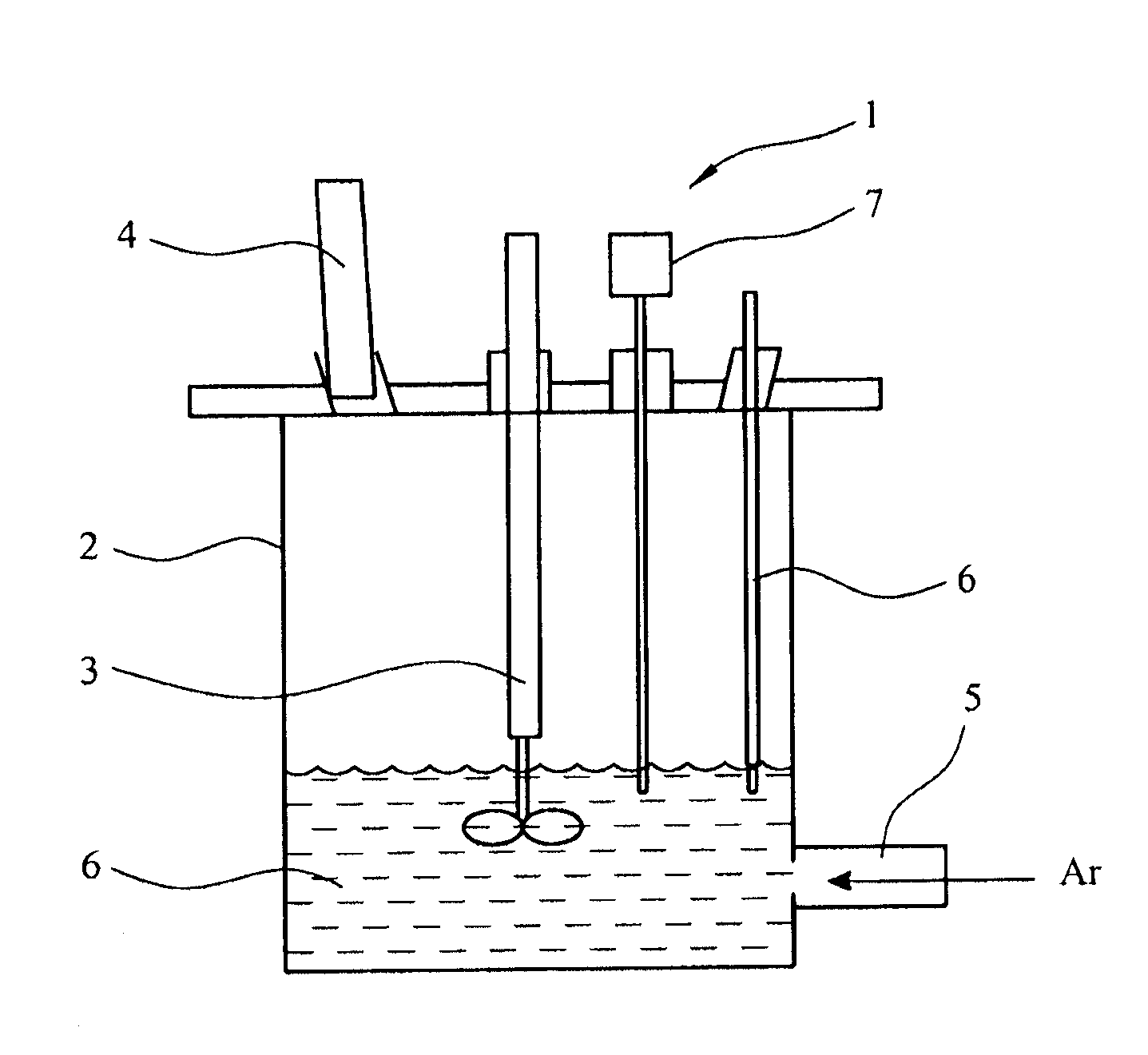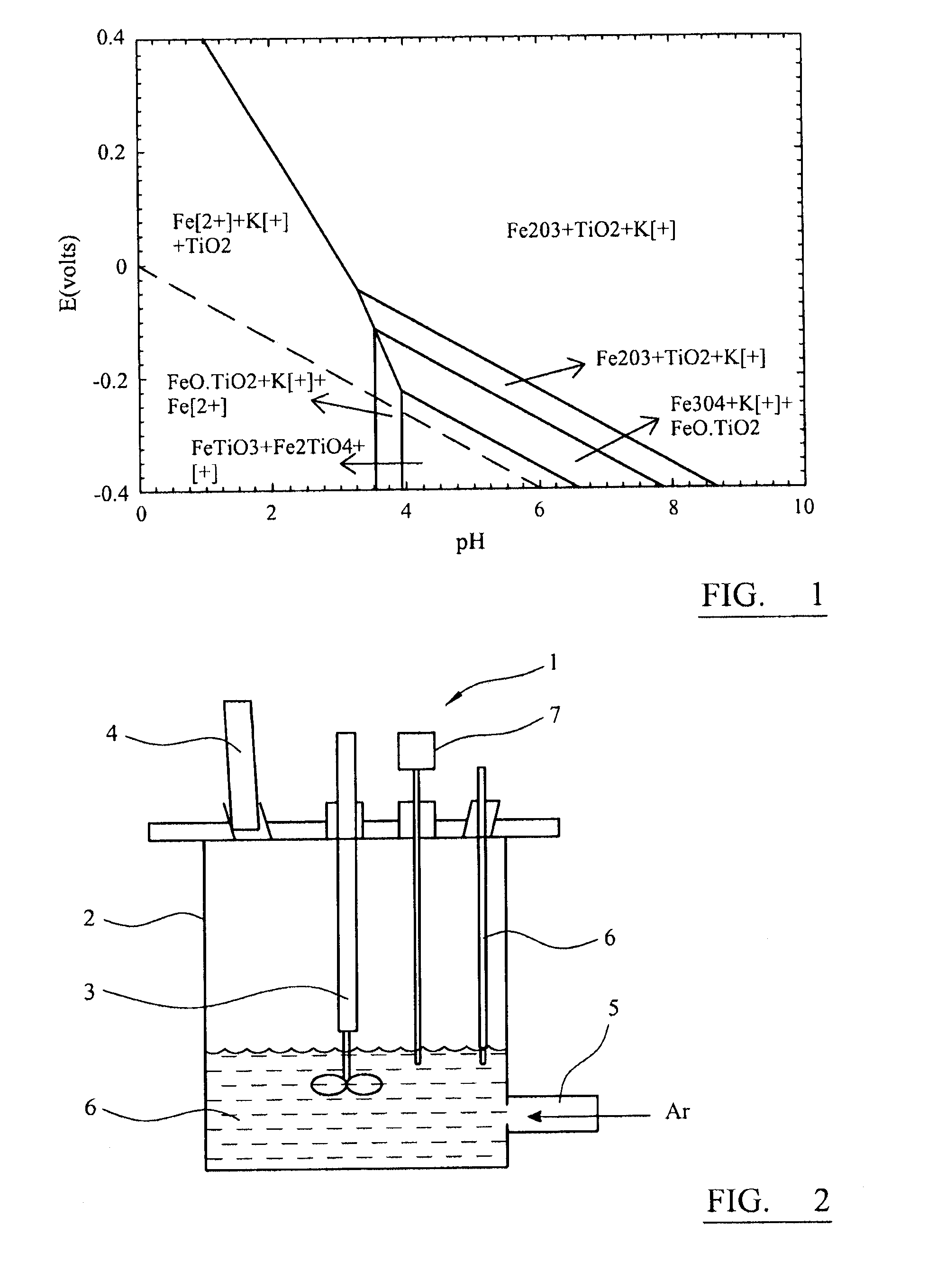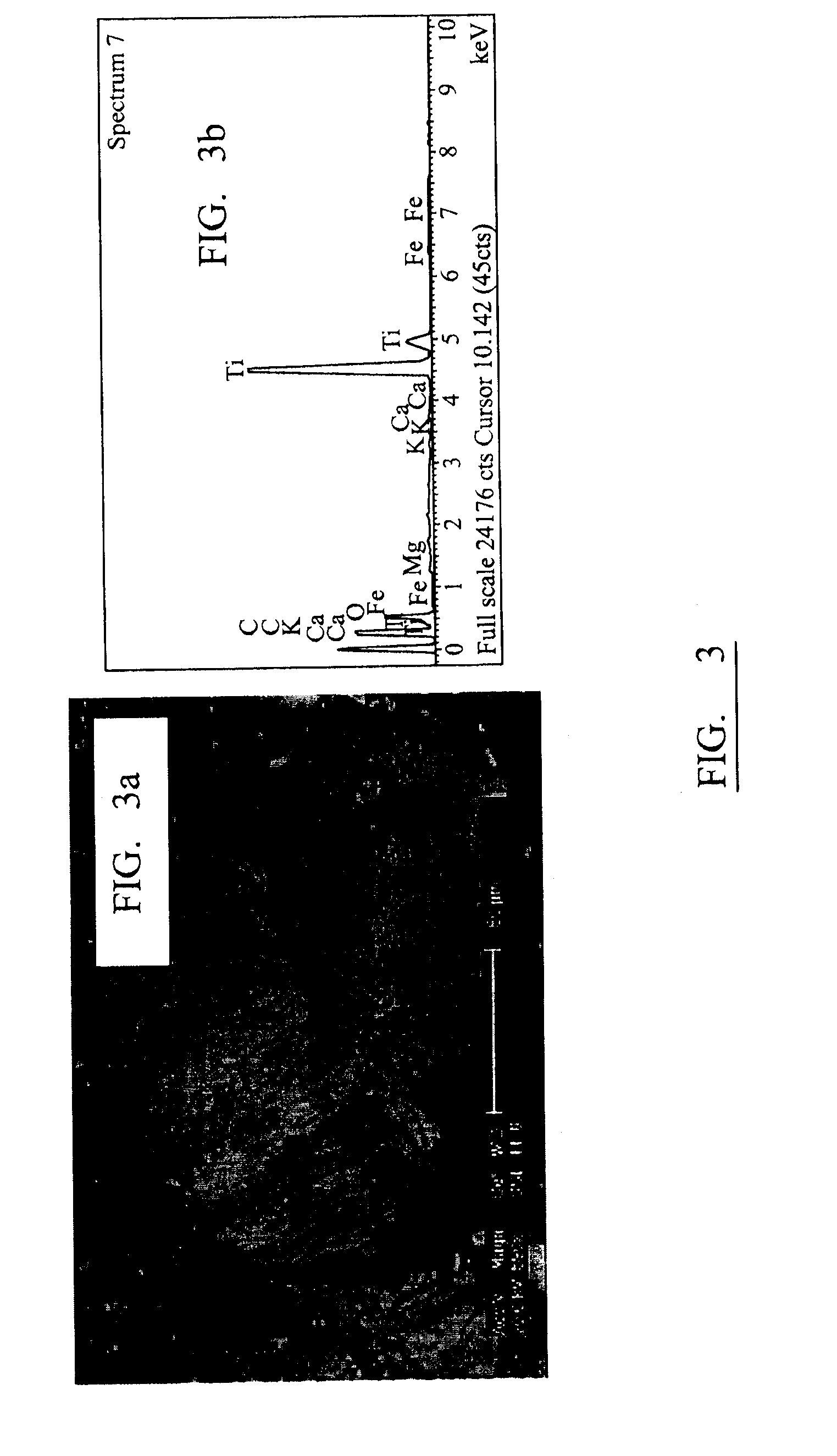Process for recovering titanium dioxide
a titanium dioxide and product technology, applied in the field of titanium dioxide product recovery, can solve the problems of toxic waste generation, ineffective removal of iron compounds,
- Summary
- Abstract
- Description
- Claims
- Application Information
AI Technical Summary
Problems solved by technology
Method used
Image
Examples
example 1
[0080]The experiments described in Example 1 compare leaching in oxidizing and reducing media which lead to the production of synthetic rutile having a TiO2 concentration greater than 92 wt %. Unless specified otherwise, the roasted ore upon which the leaching experiments were conducted was prepared in a similar manner to the preparation of K2CO3 and Na2CO3 roasted and washed ores referred to specifically below.
Experimental
[0081]The reactor assembly of FIG. 2 was mounted on a heating mantle, and the temperature was varied between 323K and 353K. Aeration leaching was carried out in a solution of NH4Cl, methanol and acetic acid. Reduction leaching was carried out in a solution of ascorbic acid and oxalic acid.
[0082]The principle of leaching is based on the Eh-pH diagram shown in FIG. 6. During leaching, no potential was applied, and the value of hydrogen electrode potential EH was zero. When the pH of the medium is altered, various phases are likely to form. At zero potential, Na+ ion...
example 2
Role of Ferrihydrite in the Leaching and Separation of Rare-Earth Oxide Impurities
[0105]
TABLE 3Chemical composition of magnetic and non-magnetic fractionsof ilmenite ore in wt %ChemicalMagneticNon magneticcompositionilmeniteilmeniteTiO26175.6FeO28.40.1Fe2O38.415.5Al2O30.51.2MgO0.20.4Mn3O40.20.3CaO0.10.1SiO21.22.2P2O50.70.9Cr2O30.20.2CeO20.20.9La2O30.00.3LOI at 1100° C.1.051.7
[0106]A differential dissolution technique (Schwertm. U 1973 “Use of Oxalate for Fe Extraction from Soils” Canadian Journal of Soil Science 53(2): 244-246; Jambor, J. L. and Dutrizac, J. E. (1998). “Occurrence and constitution of natural and synthetic ferrihydrite, a widespread iron oxyhydroxide” Chemical Reviews 98(7): 2549-2585) was carried out in a dark room by shaking the solution for 2 hours at room temperature after which the iron content in the solution was ascertained from atomic absorption analysis. Oxalic acid was added during the differential dissolution process to maintain the pH at 3. It was shown t...
example 3
Particle Size and Purity of Synthetic Rutile
[0123]
TABLE 9Chemical compositions of various ores in wt %IlmeniteChemical compositionBomarAnataseTiO269.2556.3FeO15.20Fe2O36.118.4Al2O32.46.8MgO0.91.2Mn3O40.40.35CaO0.11.7SiO23.83.9P2O50.35.6Cr2O30.20.2CeO20.71.6La2O30.30.6LOI at 1100° C.0.85.15
[0124]Particle size is affected by most of the operational parameters within the alkaline roasting and reductive leaching steps. Unreacted Bomar ilmenite (see Table 9) has a particle size ranging from 100-450 μm which, when mixed with the alkali salt at elevated temperatures, reacts and binds within the grains.
[0125]The alkali salt selected for the reaction influences greatly the resulting size of the reacted ilmenite grains. Lithium, sodium and potassium salts behave in a similar manner by forming a product layer through which the alkali ions tend to diffuse toward the unreacted core (see FIGS. 18 and 20).
[0126]Lithium salts have an ionic radius of 0.68 Å which falls between the ionic radius of Fe...
PUM
| Property | Measurement | Unit |
|---|---|---|
| pH | aaaaa | aaaaa |
| temperature | aaaaa | aaaaa |
| temperature | aaaaa | aaaaa |
Abstract
Description
Claims
Application Information
 Login to View More
Login to View More - R&D
- Intellectual Property
- Life Sciences
- Materials
- Tech Scout
- Unparalleled Data Quality
- Higher Quality Content
- 60% Fewer Hallucinations
Browse by: Latest US Patents, China's latest patents, Technical Efficacy Thesaurus, Application Domain, Technology Topic, Popular Technical Reports.
© 2025 PatSnap. All rights reserved.Legal|Privacy policy|Modern Slavery Act Transparency Statement|Sitemap|About US| Contact US: help@patsnap.com



